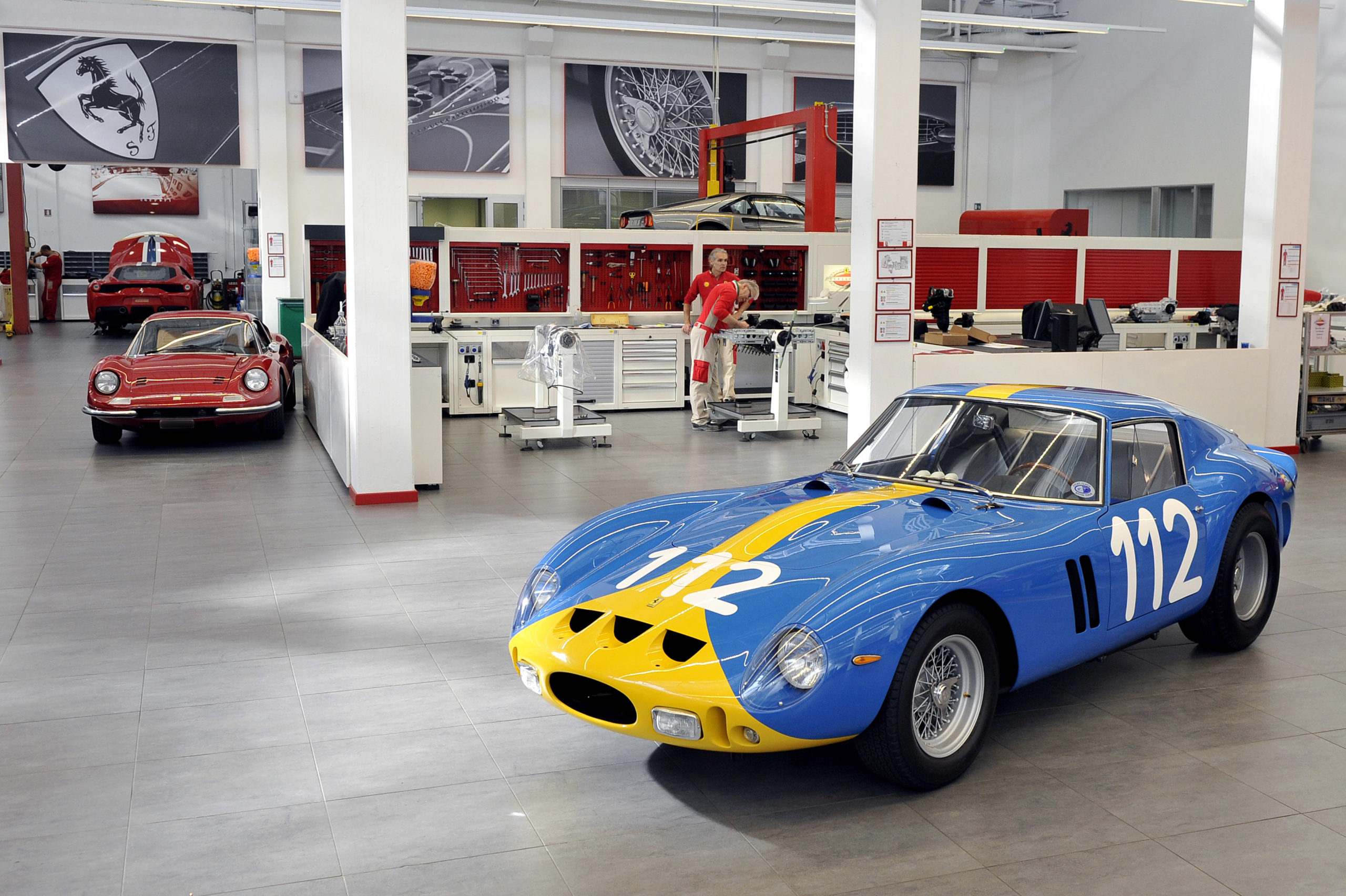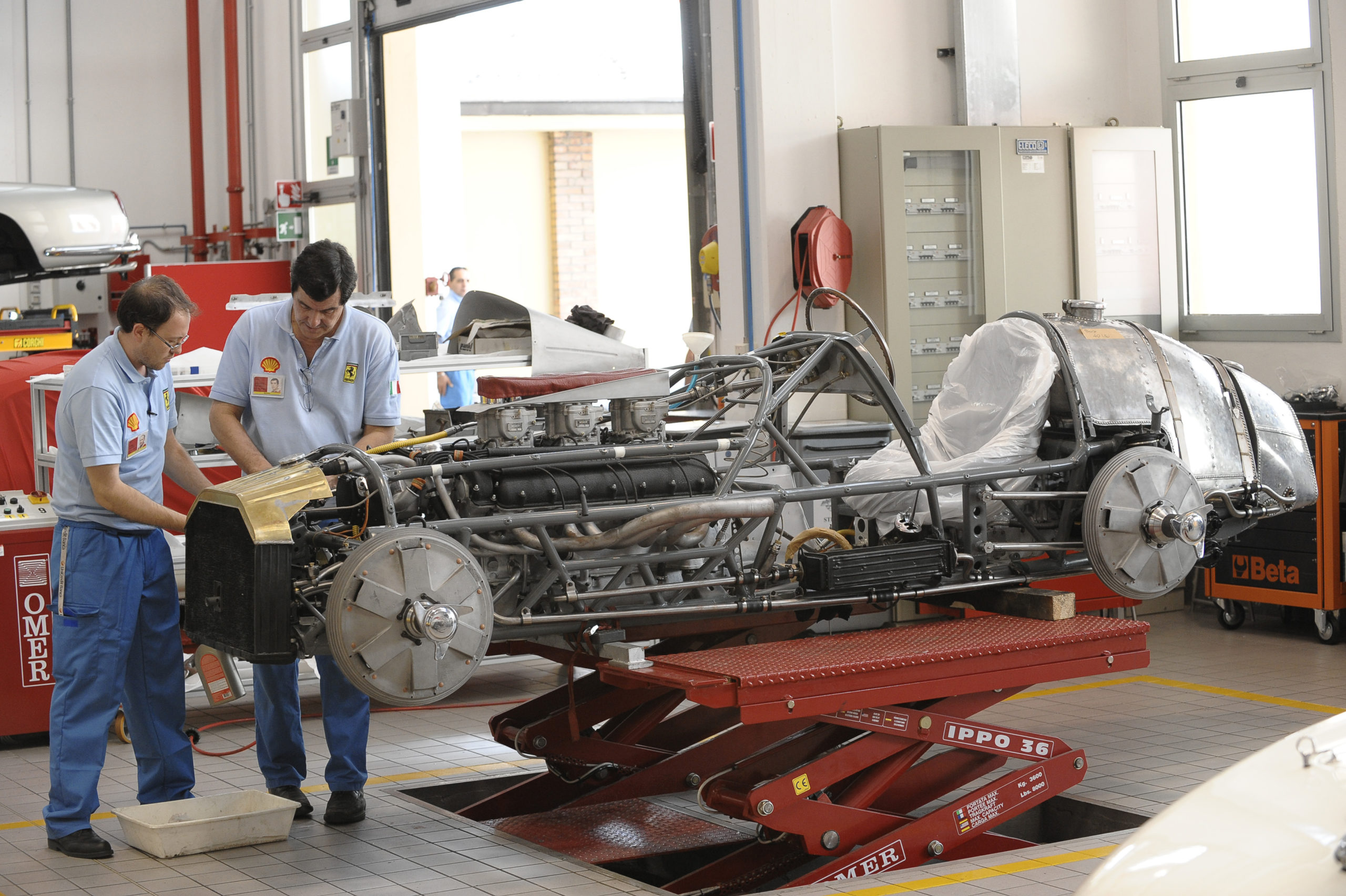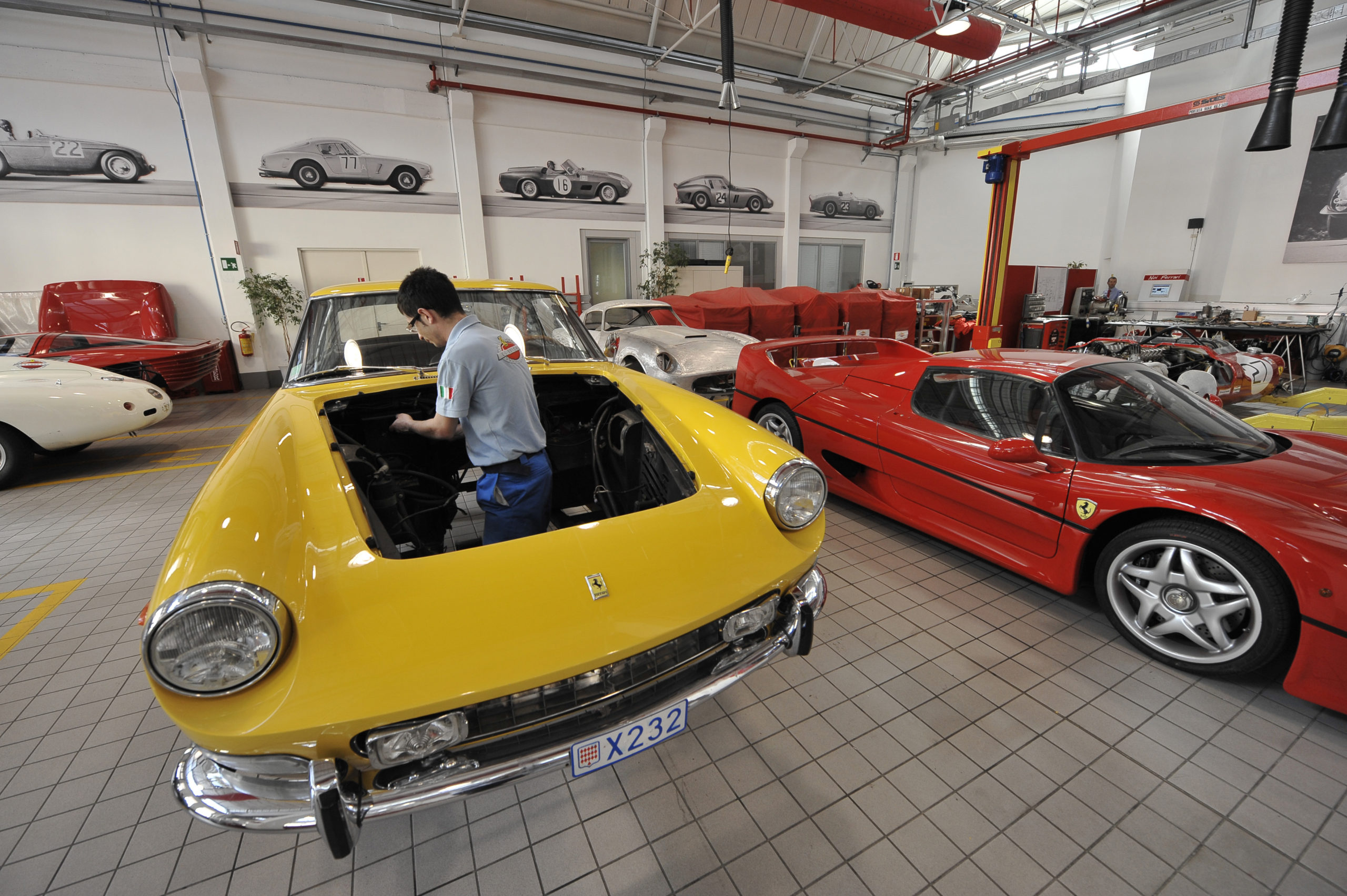Photo credit: Ferrari
On taking delivery of a new car, no one would ever dream of asking “but can we be sure that this is exactly how it was when it left the factory?” And yet, as every true enthusiast knows, this is one of the very first questions to ask when you are thinking of buying a classic car. Is that its original color? Is the engine the one that was originally installed? At the time it was built, was the upholstery available in that particular fabric?
The answers to these questions determine the outcome of the negotiations: either a successful deal or the end of a dream.

But to find these answers, there’s really only one thing you can do: some serious studying! That means finding books on the topic (and reading them, not just leaving them on the table!), surfing the web, combing through online forums, or attending rallies and club meetings. Alternatively, you can look for experts on the model and pay for their advice, hoping that you find someone who is an expert at more than just charging high fees!
The manufacturers, well aware of these difficulties, now have special departments which they created precisely in order to provide, from their archives, the information you need. Basically, it’s like going and asking a mother what her baby was like!
Furthermore, these departments are now increasingly equipped to restore vehicles to their original condition, if that is what is required.
So, how much does this kind of “guarantee” cost, and above all, what is it worth? The price for certifying a car depends very much on the information provided. Accordingly, it ranges from a modest amount (double figures) if all you want is a laminated sheet that states the original color of the vehicle and gives some details about its interior and accessories (or a little extra if you opt for the deluxe version with photos) to several thousand euros for a full certification. Given the value of the brand, Ferrari’s prestigious Ferrari Classiche department requires that the car be sent to an authorized center where they will check it, possibly dismantling some of the parts to ascertain significant details. If the car passes the test, they then issue the famous Red Book, certifying its authenticity.

Moving on to the second part of our question, what is all this worth? In this piece we focus on Ferrari Classiche certification, as it is not only exhaustive but also the certification that most boosts the value of a car; in fact, when a car is offered with Ferrari Classiche certification, auction houses will always draw attention to the fact. It is also important to appreciate that, in the words of a true expert: “classic cars produced in limited numbers are handcrafted products, and no two are identical”.
So, having looked at the who what and why of this issue, let’s examine some data.
Our first “case” is a 1970s classic: the Ferrari 365 GTB/4 Daytona. We here look at five Daytonas that have changed hands in 2020, three of which are certified, and two not. The more economical of the two sold without a Red Book fetched USD 467K, while the other, a car with 48,000 miles on the clock, changed hands for USD 500K. To enter into the fabulous world of certified Daytonas, though, you have to be willing to put your hand deeper in your pocket: the least expensive of the three certified cars cost USD 544,500; the next was a rare Daytona Plexiglass RHD (but sold in Europe and therefore with a fairly limited market), which changed hands for EUR 522,500 (around USD 580K), while the most expensive, never restored, was sold for USD 604,500. Therefore, the average price of an uncertified example was found to be USD 483,500, whereas the “manufacturer guaranteed” cars sold for an average of USD 576,300. The difference is considerable: USD 92,800 (or 19%). My calculations actually err on the cautious side, as I refrained from including a certified car that only this week fetched USD 715K (at the Mecum auction in Indianapolis), and a “risky” version of the Plexiglass nose model, which recently sold for EUR 434,500 at the RM Sotheby’s online-only “Open Roads – the European Summer Auction”. These are isolated examples, and so, for the sake of caution, it’s best we stop at the ones mentioned above.

Moving on in time a couple of decades, let’s consider another example, namely the penultimate evolution of the Testarossa: the 512 TR. While remembering that, as already pointed out, no classic car is identical to another, I nevertheless found two very similar models, comparable in many respects. In January this year, RM Sotheby’s sold a 1993 Ferrari 512 TR with 8915 miles on the clock for USD 179,200. Just a couple of months later, in March, the same auction house, at the Amelia Island Concours, sold the same model, in this case a car with 10,092 miles under its belt, for USD 229,600. Why the difference? Certification! Some might argue that perhaps it was because the first was yellow and the second red, or that the different settings drew in different customers. I don’t deny that; but the difference of 28.1%, is close to what we saw with the Daytona.
When a purchaser is able to buy with confidence, this sometimes results in a sale that would once have been quite unexpected: among seven specimens of the Ferrari 250 GTE 2+2 offered in the course of 2019 and the first half of 2020, six were uncertified. Only one had the all-important “piece of paper”. The outcome? The only Ferrari Classiche-certified car was sold, while five of the other six were returned to their owners. It is also worth noting the prices of the two cars that did sell: the uncertified one changed hands for USD 313K, while the one with the Red Book fetched USD 383K, a difference of USD 70K or, if you prefer to think in percentage terms, +22%.
So, in answer to the question we asked at the start, “What is a Ferrari Classiche certification worth?”, our small survey indicates that it adds around 20% to the value of a car. This is just a preliminary investigation, and we won’t be leaving this issue here. In the meantime, though, I think we can say that if you have a Ferrari in your garage, it could be a good idea to get it certified.
